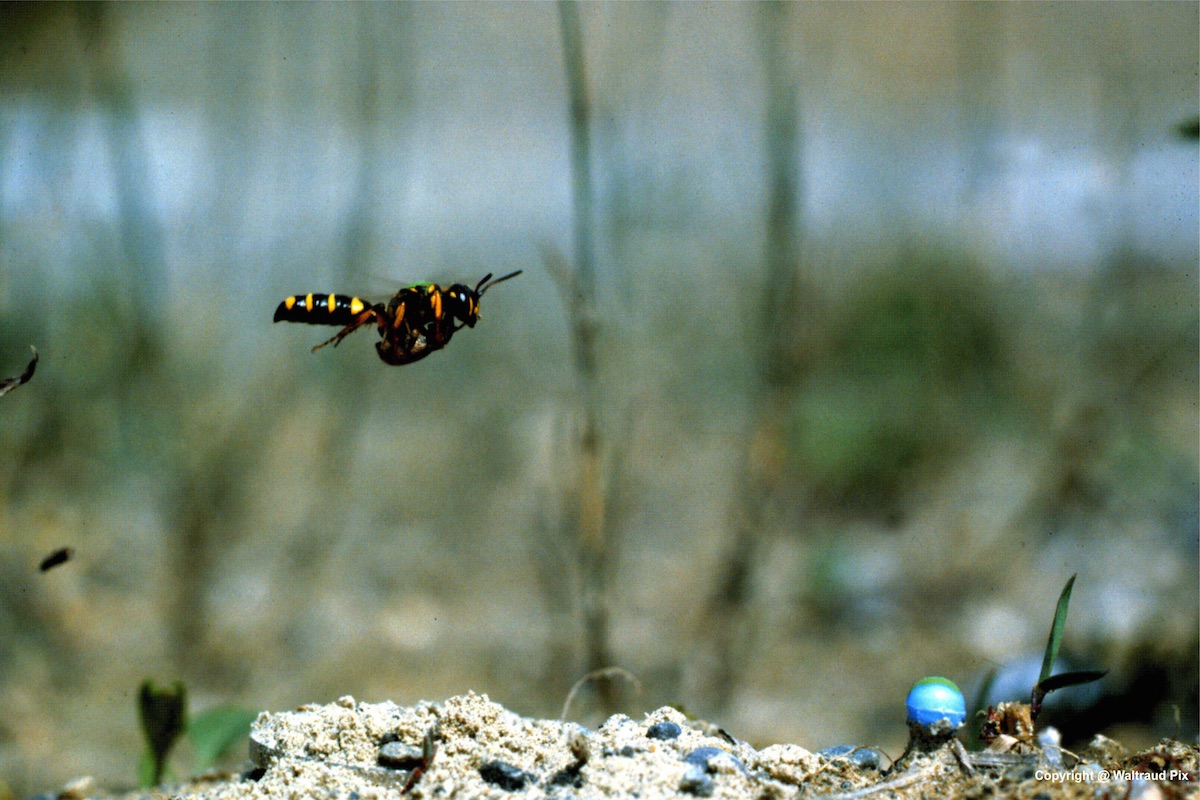Buzzworthy View: See the World Through a Wasp's Eyes

Before a ground wasp leaves its burrow to forage, it takes to the air to perform a peculiar aerodynamic exercise: looping in arcs around the nest and gradually gaining height and distance before flying away. Now, scientists have created a video of this swirly trip from the insect's point of view.
Solitary wasps — along with other insects — are known to perform "learning flights" when they leave their nests, making repeated loops around the nest location. And their return flights appear to mimic the patterns established during these "learning" loop-de-loops. While scientists had determined that these specialized departure flights were helping the wasps to orient themselves so they could navigate back home after foraging, it was unclear how, exactly, they were doing it.
It ended up taking 10 years for scientists to figure out that process, and the results were published online today (Feb. 11) in the journal Current Biology. [Video: Ride Along as a Wasp Navigates Home]
Solitary ground wasps' maneuvers are conducted with precision and follow a distinct pattern common among insect species that perform learning flights, according to study co-author Jochen Zeil, who investigates ecological neuroscience at the Australian National University. "They back away from the nest in a series of widening arcs, pivoting around the nest while looking back," Zeil told Live Science in an email. "While flying along these arcs, the insects see the nest environment from different directions and distances, and always keep the nest in their left or right visual field."
But what, exactly, were the ground wasps seeing during these flights? To find out, the researchers used high-speed cameras to capture wasps' departures and return flights.
As wasps left their nests and then returned later in the day, scientists recorded their movements with synchronized video cameras, and used software to track the wasps' head positions and visualize the direction of their gaze. A panoramic imager allowed them to capture and then model the terrain around the nest in 3D. With this virtual 3D environment and a digital map of a wasp's body position and sight lines during flight, the scientists were able to navigate using a first-person perspective — recreating not only the wasp's flight, but also its point of view, and allowing them to fly around the nest as the wasp did and see what it saw.
Once they had this virtual environment, they used it to test predictions of wasp flights. The researchers compared patterns in return flights to orientation flight patterns, and found that their simulations matched the wasps' behavior.
Sign up for the Live Science daily newsletter now
Get the world’s most fascinating discoveries delivered straight to your inbox.
As learning flights are performed by a number of different insect species — some social and some solitary — the scientists expect that their study will have broader applications for research exploring how this internal GPS system develops, and could inform the development of new techniques for studying how animals process data input from the world around them.
Follow Mindy Weisberger on Twitter and Google+. Follow us @livescience, Facebook & Google+. Original article on Live Science.

Mindy Weisberger is an editor at Scholastic and a former Live Science channel editor and senior writer. She has reported on general science, covering climate change, paleontology, biology and space. Mindy studied film at Columbia University; prior to Live Science she produced, wrote and directed media for the American Museum of Natural History in New York City. Her videos about dinosaurs, astrophysics, biodiversity and evolution appear in museums and science centers worldwide, earning awards such as the CINE Golden Eagle and the Communicator Award of Excellence. Her writing has also appeared in Scientific American, The Washington Post and How It Works Magazine. Her book "Rise of the Zombie Bugs: The Surprising Science of Parasitic Mind Control" will be published in spring 2025 by Johns Hopkins University Press.









